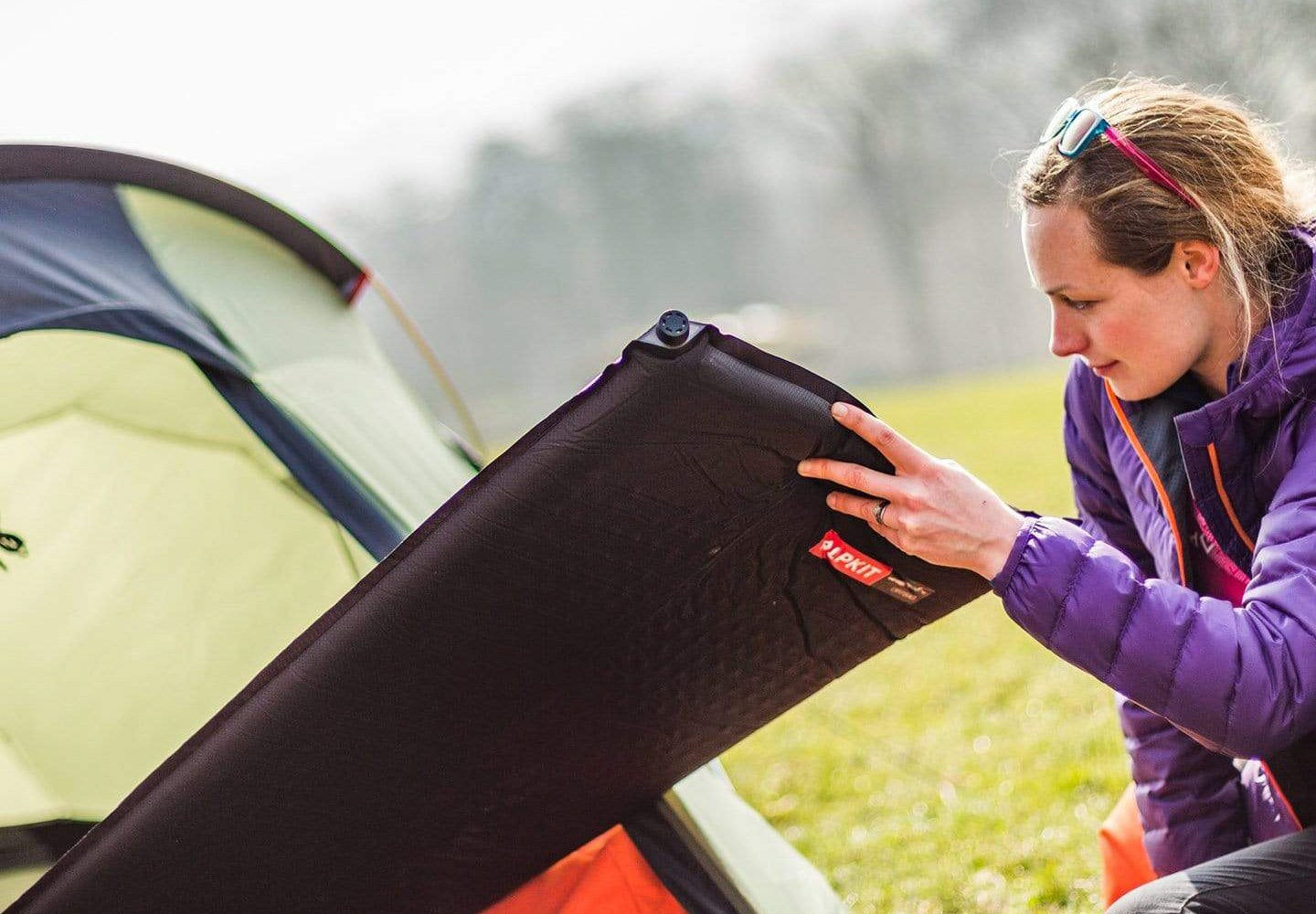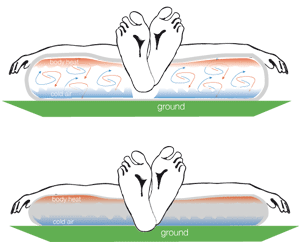
How do self inflating sleeping mats work?
The perfect choice for any camper is a bed that is super comfortable, packs down to the size of matchbox and is warm to sleep on. The matchbox-sized sleeping mat is still in development but we think we've found a solution in the meantime!
Closed cell foam mats are light, insulating and can't be punctured but they aren't very comfortable. Inflatable mats are comfy and pack down small but can be cold because there is nothing to stop the air circulating around the inflated chambers. Self-inflating mats use compressible foam insulation and inflate like an airbed, combining the best properties of both.
How Do Self-Inflating Sleeping Mats Work?
A self-inflating mat is basically a layer of compressible (open cell) foam sandwiched inside an airtight envelope of fabric with a sealable valve. When you open the valve, the foam expands and sucks air into the mat. After a couple of minutes the mat will be semi-firm. You'll then need to add a couple of breaths of air to make the mat firm enough to sleep on.
The foam works as a built-in pump and provides the insulation by trapping still air within the mat. The sealed fabric, in combination with the foam, provides a comfortable springy platform to sleep on. And, because the foam is compressible, the whole mat can be rolled away into a compact package by squeezing all the air out.
Life would be simple if it was a one-mat-world (one mat to rule them all one mat to find them...) but as with all outdoor gear, sometimes compromises have to be made when prioritising warmth, weight or comfort.

Construction
To understand how a self-inflating mat is made, think about how you would make a cheese toastie – only the bread is replaced by fabric and the cheese replaced by foam! In fact, during the early development of Thermarest® (the very first self inflating mats), inventors Jim Lea and Neil Anderson used a highly modified sandwich maker to make their first prototypes!
However you can't just stick fabric together, you need a glue. In our very first sleeping mats (the Airic), we used a thin membrane of TPU plastic that was laminated to the inner surface of the fabric, creating an airtight layer. Most high-end brands use this construction but without careful monitoring, defects in the lamination can occur. We now use a patented PU coating instead which is more reliable and easier to ensure a high level of quality control. Cheaper mats may use a PVC coating as the "glue" to reduce costs but PVC is highly toxic and bad for the environment.
Fabrics
Our mats use a variety of different fabrics depending on their expected use.
33D Ripstop Nylon – Extremely hardwearing for its weight we use this on our Airo mats. Show this fabric the respect it deserves and it will reward you with many good nights sleep.
50D Nylon – A bombproof hardwearing fabric that doesn't need so much love and care as the lighter 33D. We use this on our Dirtbag mats to ensure you stay comfortable wherever your adventures may take you.
75D Polyester – Polyester is the workhorse fabric in our range. We use it on the Dozer because it offers great value for money whilst providing the durability required by a sleeping mat.
75D Peach Polyester – The surface of this fabric has been brushed during its manufacture to give it a softer feel than typical synthetic fabrics. We use this on the Dozer to make sure it feels just like you're sleeping in your bed at home.

Foam
In the heart of every self inflating mat is a layer of open cell foam. We use open cell foam because it can be compressed easily for pack size but it recovers back to its original shape to help the mat self inflate. The reason open cell foam can do this is because all the tiny chambers within the structure of the foam are connected. Whilst it is possible to force air into or out of these tiny chambers it is very hard for air to circulate naturally when sealed providing a good thermal membrane. The open cell foam inside every sleeping mat has been specified to be the perfect balance between weight, inflation time and durability.
Die Cutting – Die cutting a foam core can reduce the overall weight of a mat by up to 30%. This has the negative effect of reducing the insulation properties of the mat as it creates larger chambers that can circulate air. We use different die-cut profiles in our mat range to balance weight reduction with insulation.
Matrix – This removes the maximum amount of foam whilst retaining enough material to allow the mat to self inflate and provide adequate insulation.
Dot Matrix – The circular pattern lightens the foam weight by around 20%. Used in our thicker pads there is enough foam retained to help provide support when using the mat partially inflated.
Selective Die Cut – Where insulation and support are crucial to retain the mat's comfort we only die cut the foam in low load areas such as the feet.
Foam Coring – The foam core of a self-inflating sleeping mat has tiny circular cores of foam removed along their entire length and sometimes their width to create air inflation tubes. This helps the foam recover and inflate the mattress to its full thickness faster.

Valve
The valve on a mat seals the air inside making it hard enough to sleep on without touching the ground beneath. Our Dozer has two valves to help inflate and deflate quicker. The shape of the valve makes it easy to continue blowing into the valve as you twist it to seal, ensuring you can achieve the desired hardness.
Stuff Bag
All our sleeping mats come with a storage sack as standard. The bag is tapered making it easy to slide the rolled mat inside and compression straps run around it to help close it up tight. A hidden pocket inside the bottom of the bag stores a repair kit should the worst happen when you're away.
